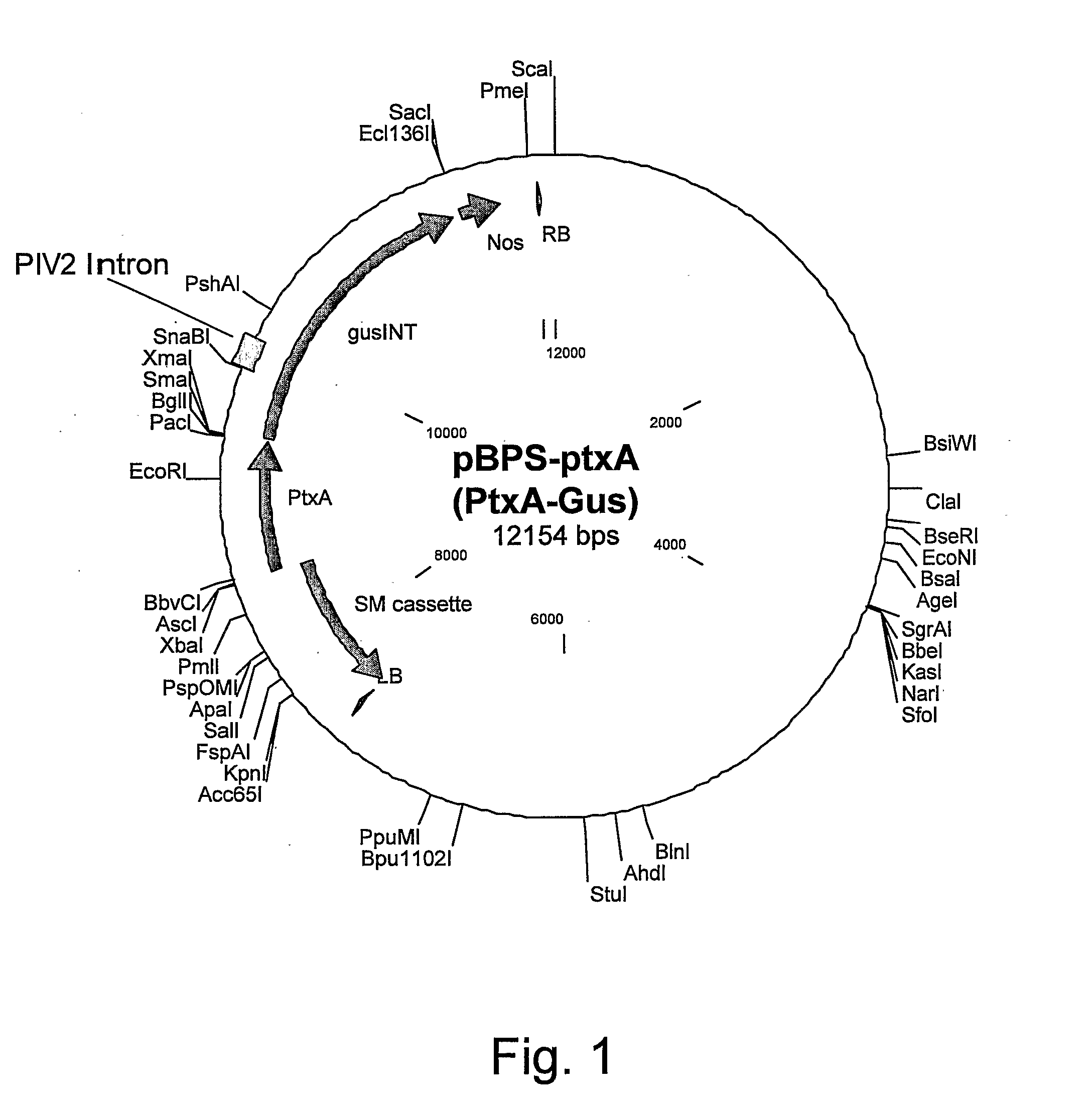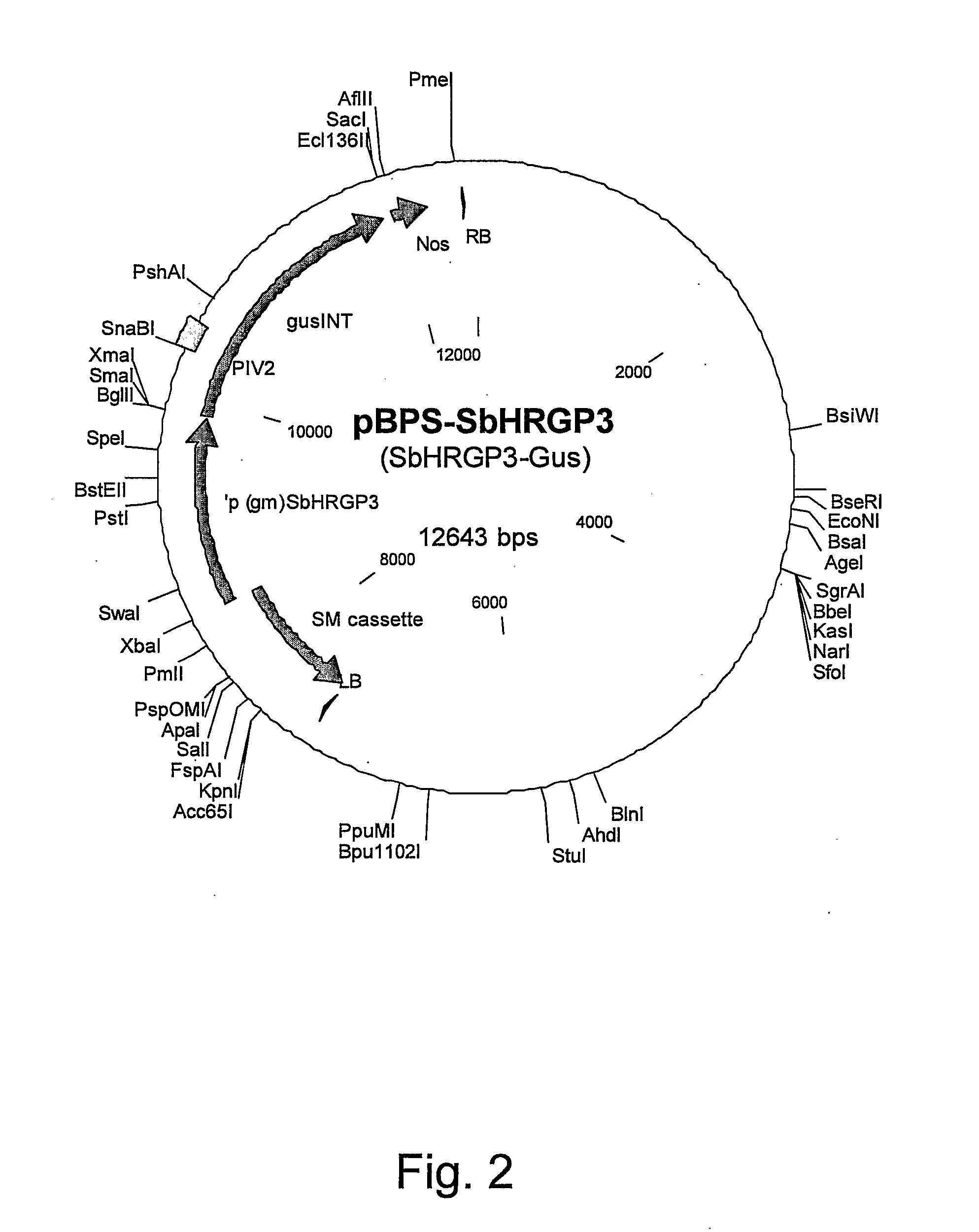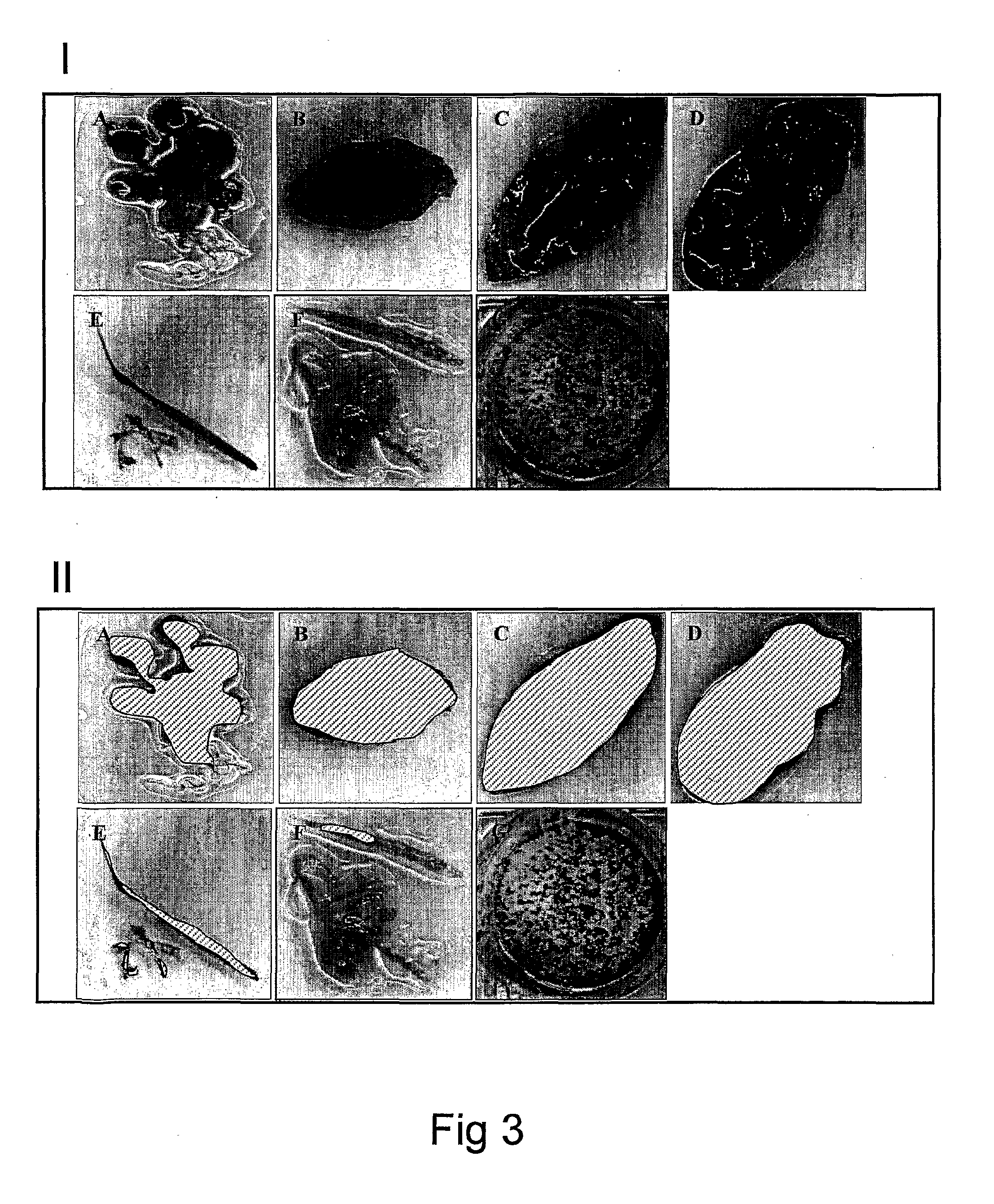Transgenic expression constructs for vegetative plant tissue specific expression of nucleic acids
a technology of nucleic acid and transgene, which is applied in the field of transgene expression constructs and vectors, can solve the problems of inability to target the expression of genes in specific plant parts or at specific developmental stages with these promoters, and the expression of transgenes in seeds is in most cases neither necessary nor beneficial
- Summary
- Abstract
- Description
- Claims
- Application Information
AI Technical Summary
Benefits of technology
Problems solved by technology
Method used
Image
Examples
example 1
Growth Conditions of the Plants for Tissue-Specific RT-PCR Analysis or Northern Analysis
[0316] In order to obtain 6-day old seedlings, in each case approximately 500 seeds (Arabidopsis thaliana ecotype Columbia) are surface-sterilized for 2 minutes with a 70% strength ethanol solution, treated for 2 minutes with a sodium hypochlorite solution (5% v / v), washed five times with distilled water and incubated for 1 day at 4° C. in order to ensure uniform germination. The seeds are subsequently sown in sterilized containers (9.7 cm×9.6 cm×9 cm) on filter paper soaked in Hoagland's nutrient solution (modified for Arabidopsis thaliana). Hoagland's solution is prepared with three different 200× stock solutions. Stock solution 1 comprises 0.5 M Ca(NO3)2, stock solution II comprises 0.1 M MgSO4, and stock solution III comprises 0.5 M KNO3 and 0.1 M KH2PO4. Before use, all stock solutions were diluted 1:200 and then mixed 1:1:1. Trace elements were added by means of a 2,000× trace element stoc...
example 2
RNA Extraction and RT-PCR Analysis
[0318] Total RNA is isolated from the plant organs described in Example 1 at various points in time of the development, following the RNA isolation protocol (Sambrook 1989) as modified for Arabidopsis thaliana. The samples were comminuted finely in a pestle and mortar with liquid N2, 1 mL of homogenization buffer was added (4 M guanidinium thiocyanate, 0.1 M Tris HCl pH 7.0, 10 mM EDTA, 0.5% sodium laurylsarcosine, 1% (v / v) of β-mercaptoethanol), carefully disrupted further while defrosting and transferred into a 2 mL reaction vessel filled with 800 μL of phenol / chloroform / isoamyl alcohol (P / C / I) (25:24:1 v / v, covered with a layer of DEPC (diethylpyrocarbonate) treated water. The mixture was vortexed for 1 minute, centrifuged for 15 minutes at 4° C. and 17,500×g, the aqueous phase was removed and re-extracted by shaking with 800 μL of P / C / I and centrifuged (for 15 minutes at 4° C. and 17,500×g). To remove the phenol, the mixture was extracted with ...
example 3
Cloning of the ptxA or SbHRGP3 Promoter
[0336] Genomic DNA from pea and soybean is extracted using the Qiagen DNAeasy Plant Mini Kit (Qiagen). The ptxA promoter region including the 5′-untranslated region (882 bp) and the SbHRGP3 promoter region including the 5′-untranslated region (1380 bp), respectively, were isolated from genomic DNA of pea (Pisum sativum) or soybean (Glycine max), respectively, using conventional PCR. Approximately 0.1 μg of digested genomic DNA was used for the regular PCR reaction (see below). The primers were designed based on the pea ptxA sequence disclosed by Bown (GenBank accession number X67427.1) and the SbHRGP3 sequence disclosed by Ahn (GenBank Acc.-No.: U44838), respectively. One μL of the diluted digested genomic DNA was used as the DNA template in the primary PCR reaction. The reaction comprised primers primer 1 (SEQ ID NO:3) and primer 2 (SEQ ID NO:4 or 11) for amplification of the ptxA promoter, or primers primer 1 (SEQ ID NO: 5) and primer 2 (SEQ...
PUM
| Property | Measurement | Unit |
|---|---|---|
| Fraction | aaaaa | aaaaa |
| Fraction | aaaaa | aaaaa |
| Fraction | aaaaa | aaaaa |
Abstract
Description
Claims
Application Information
 Login to View More
Login to View More - R&D
- Intellectual Property
- Life Sciences
- Materials
- Tech Scout
- Unparalleled Data Quality
- Higher Quality Content
- 60% Fewer Hallucinations
Browse by: Latest US Patents, China's latest patents, Technical Efficacy Thesaurus, Application Domain, Technology Topic, Popular Technical Reports.
© 2025 PatSnap. All rights reserved.Legal|Privacy policy|Modern Slavery Act Transparency Statement|Sitemap|About US| Contact US: help@patsnap.com



